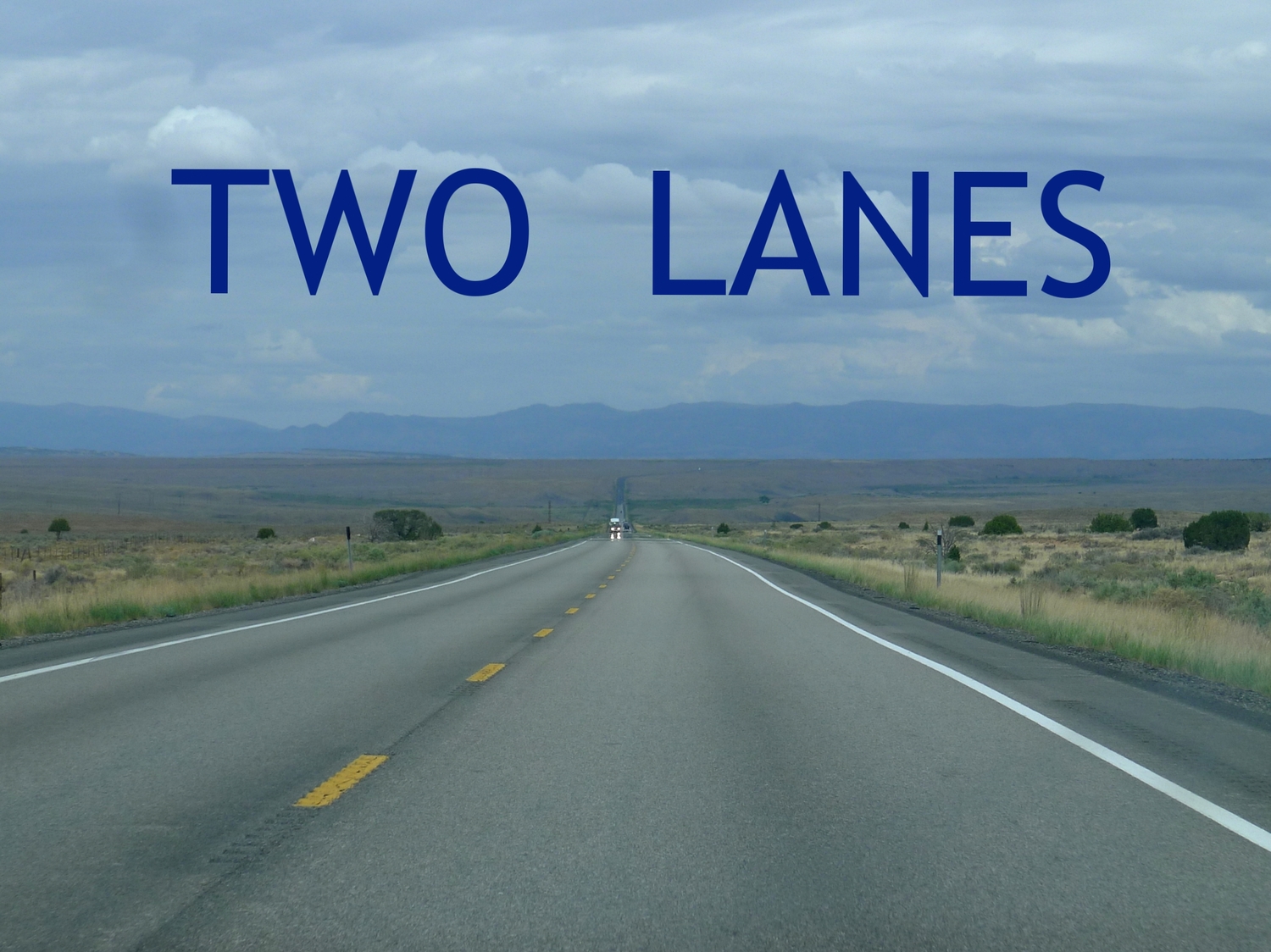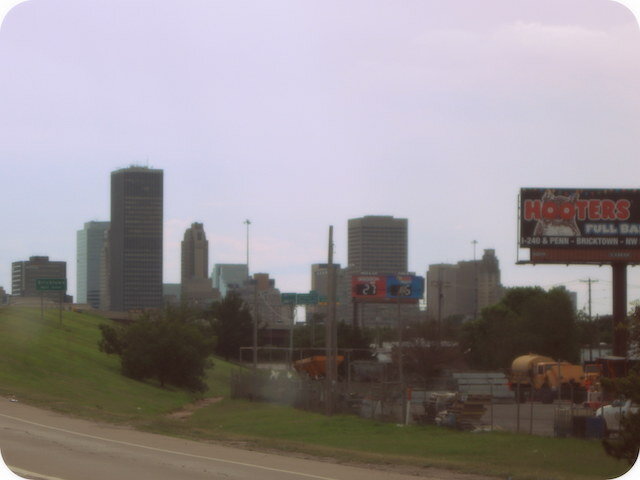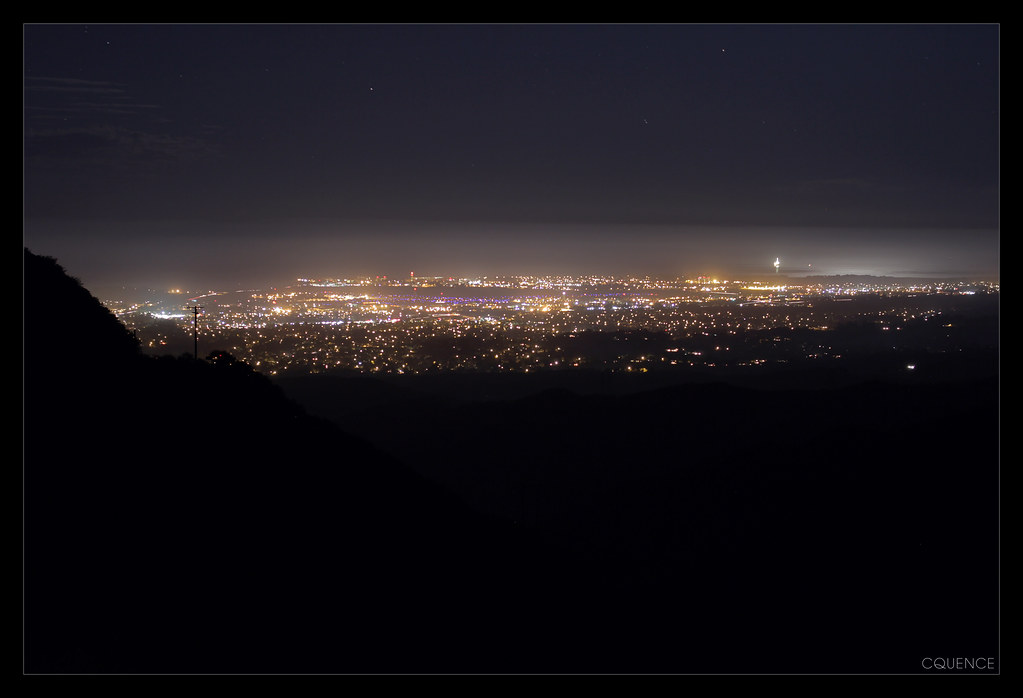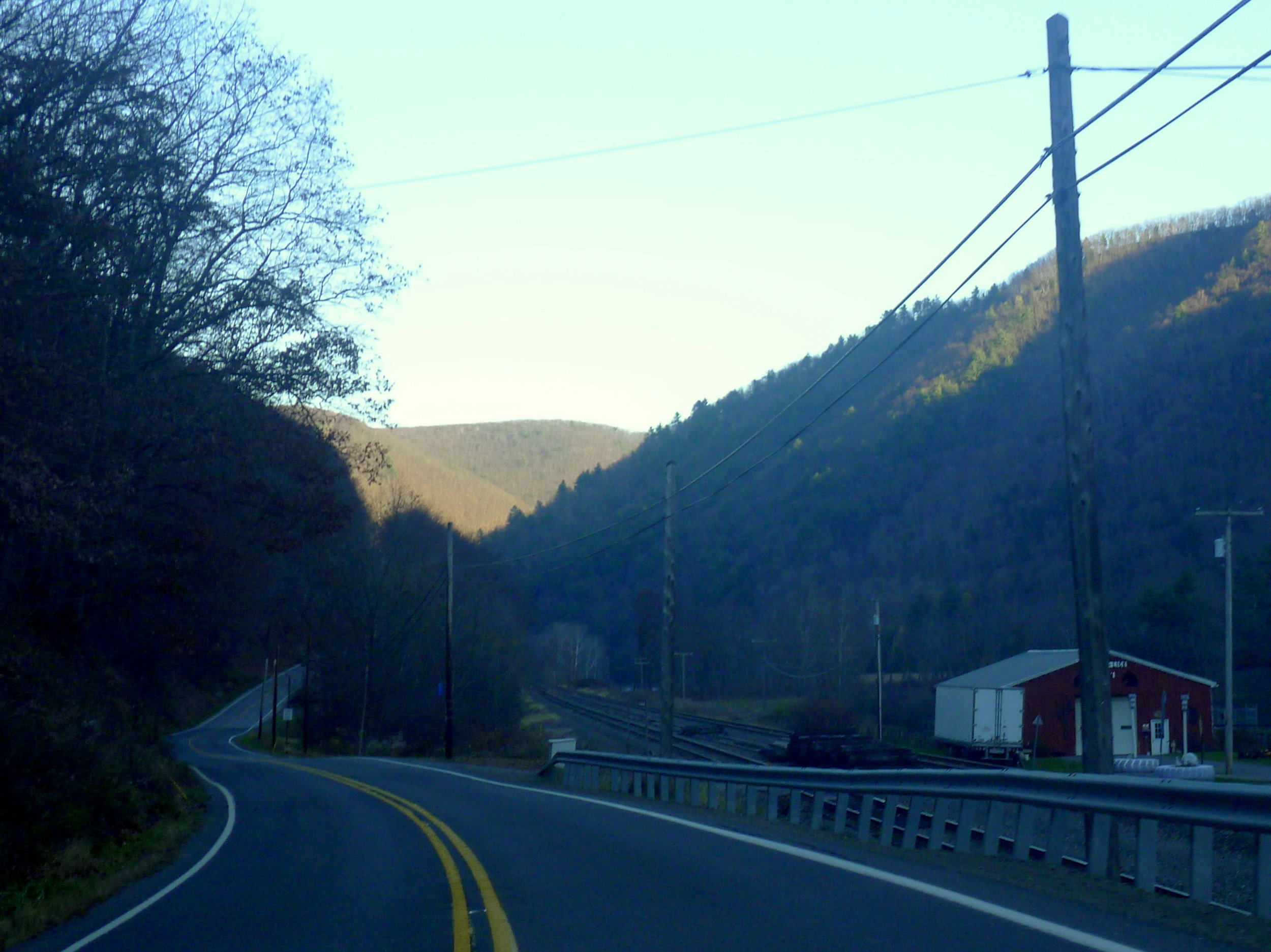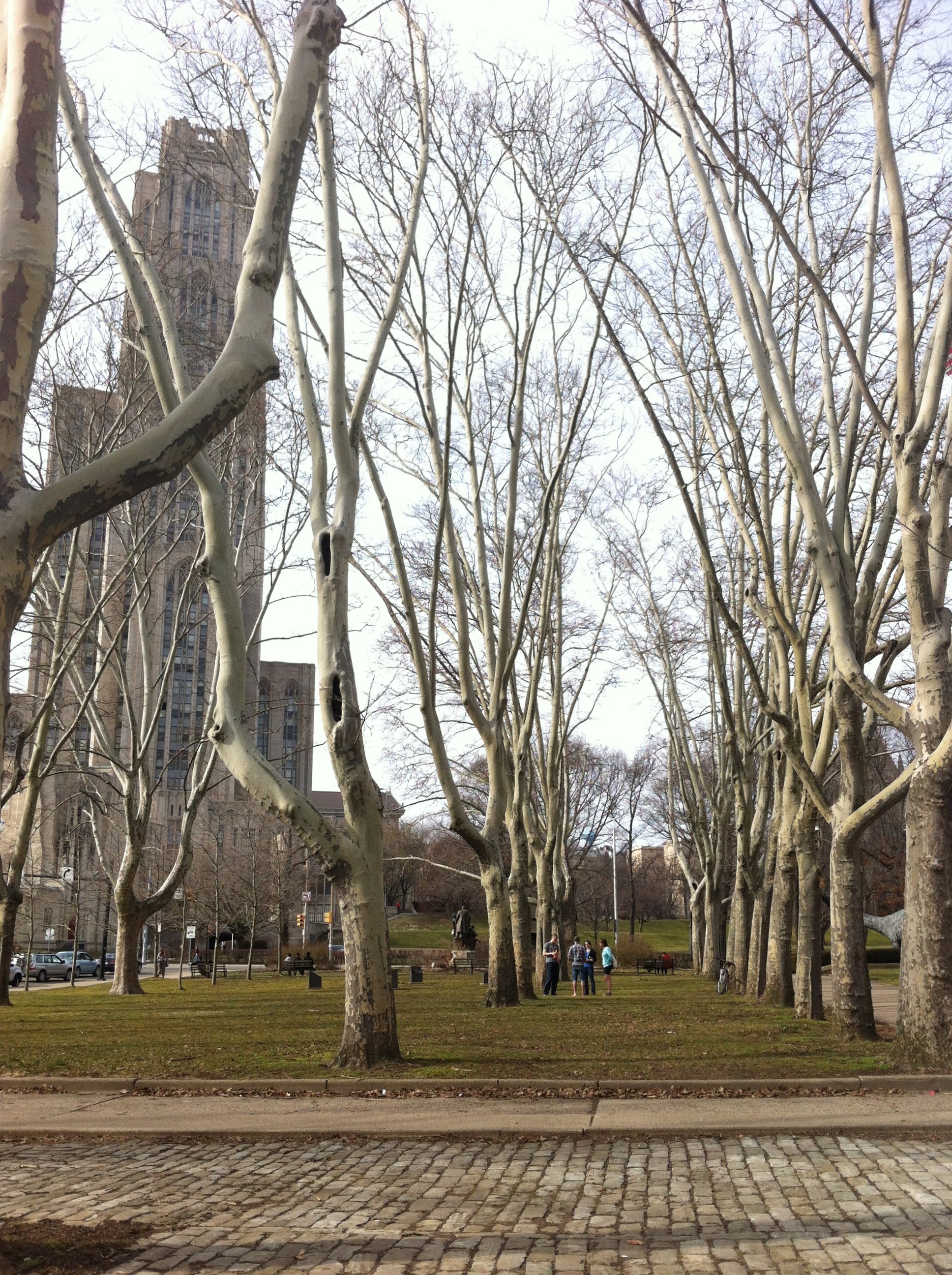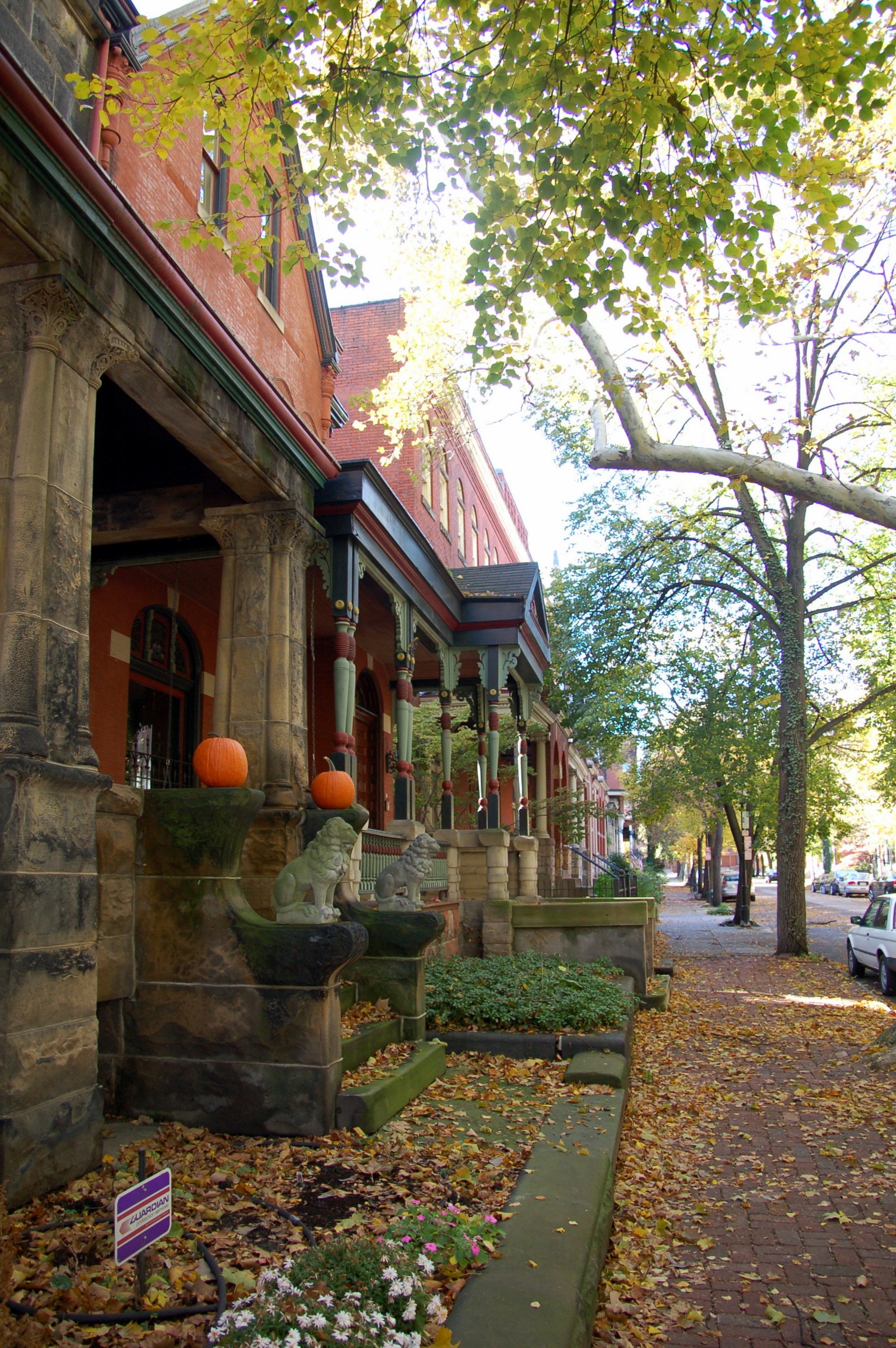Across the Plains of Texas, Scene 4
“All of this is more than I’ve ever known or seen
Come on and we’ll sing, like we were free
Push the pedal down, watch the world around fly by us”
I’m always first in line to read the riot act to anyone who reveals a deficiency of imagination by moaning about the boredom of a road trip, especially one that is largely undertaken via Interstate. Thus in the name of intellectual honesty I am obligated to sheepishly disclose the hypocrisy that I was feeling rather, well, less than stimulated by the Sooner State. Given the expansive sight lines we were afforded from the perch of Bubble’s high clearance, I further harbored doubts as to whether a departure from the I-40 corridor would have made a significant aesthetic difference.
Maybe I was rashly premature in my judgment. Maybe I was never going to give Oklahoma a fair shake after the veritable variety show we had been exposed to thus far, the bountiful agricultural vitality of the near Midwest, the multifaceted urbanity of St. Louis, the lost-and-found Americana of Route 66, the distinctive charisma of Eureka Springs, and the congenital comeliness of the Ozarks. Maybe it was the instinctive burn of disappointment upon skimming over the confluence of the Canadian River and its North Branch, waterways that were once critical in guiding the intrepid successfully beyond the Great American Desert, now amounting to yet another blobby impoundment. Maybe it was the knot deep in the pit of my stomach that tightened every time we flew past a billboard advertising a gambling den proffered by some particular tribal affiliation. Maybe it was all of these factors, rolled into the mileage that had already compounded into an endeavor the scope of which I had never so much as dreamed of tackling before, even as we had barely reached its midpoint.
I naively held out hope that the weather would finally turn, injecting some sorely needed zest into my session at the helm. Perhaps it would even force us from the infernal highway, under the guise of safety, and into some friendly shitkicker tavern where we could kick our feet up until conditions became less perilous. After all, everything had more or less gone perfectly according to plan, which incurred a small morsel of chagrin, for baked into my conception of an authentic long-distance adventure by car was a requirement for at least one situation that necessitated some form of improvisation to resolve. This credulous fantasy was encouraged by the intermittent congealing of dark swaths of cumulus clouds on the horizon, only for them to scatter like a giggling pack of schoolchildren after tauntingly flicking a countably minimal number of droplets onto the windshield.
Steinbeck might have warned us, had he been splayed across the back seat: “When June was half gone, the big clouds moved up out of Texas and the Gulf, high heavy clouds, rainheads . . . The rainheads dropped a little spattering and hurried on to some other country. Behind them the sky was pale again and the sun flared.” The better part of century later and merely in the throes of a protracted dry spell and not a catastrophic drought, it appeared this was simply the inveterate way of Oklahoma.
Blessedly the hours slipped by in a trance as our chariot churned up the blacktop en route to Oklahoma City, which, for focalizing a metro of nearly 1.3 million people, seemed in many ways half-finished. Its stunted, boxy skyline poked up from the prairie like a feeble, sickly Oz. On a Sunday afternoon we wore the ten-lane freeways like clown shoes, comically outsized, while the original Route 66 lay buried somewhere beneath our tires. An “arts district” that had come recommended was sleepy and scattershot, a “civic center” windswept and desolate.
We wound up in Bricktown, one of those neoteric neighborhoods contrived for folks of means to be fed and entertained. I have conflicting inclinations about such artifices. On one hand, walkable mixed-use areas filled with independent businesses are, in a vacuum, a good thing. Unfortunately, they don’t occur in a vacuum and in reality often serve to propagate de facto segregation along socioeconomic lines (which in turn are closely tied to racial lines).
Bricktown was, if nothing else, executed reasonably well from a planning standpoint, taking advantage of an existing infrastructure of crumbling warehouses where they could be rehabbed and effectively mimicking their masonry style in new construction, the crowning example of which was a Minor League baseball stadium that from the exterior looked a bona fide venue for taking in nine innings. A synthetic canal wiggled past several restaurants and a multiplex cinema to a small park that was drawn up per the turn of the 21st century discrete-angle-hating vogue and oriented around a life-sized diorama commemorating the infamous Land Run of 1889.
That event paved the way to Oklahoma’s statehood by virtue of pouring tens of thousands of white homesteaders into the parcel of the continent that until then had been bequeathed to what was left of the Indians who had been tyrannically driven from their ancestral lands. Bronze horses and wagons were frozen in the act of fording the canal, their quest depicted as brave and heroic. Those settlers who jumped the gun and illegitimately elbowed their way into the Indian Territory ahead of the Land Run are revered all the more for their insolence: these were the “Sooners” from whom the state and its largest public university derive their nickname.
In their machinations I saw a faint echo of my own journey through these same lands, embarked on solely with self in mind and scant concern for greater ramifications. They, at least, could claim—even if only tenuously—survival as a motive, the need to forge a livelihood out of a hardscrabble existence. I had no such excuse.
We supped at a nearby microbrewery, more of a relative novelty in those days before you could find one on practically every corner. I satisfied in a decent burger and a more than decent red ale (former compunctions now expunged). It was fortification for the mental wringer to come, for I would not permit our escape without a visit to the Memorial.
As a child of the nineties, I had reached just the right age for the Oklahoma City Bombing to be the first major newsworthy event that I was capable of following contemporaneously, an experience that endures indelibly in my memory. It, and subsequently Columbine four years later, rocked the foundations of that all too brief window of illusory peace and prosperity following the conclusion of the Cold War. Such self-inflicted cataclysms may have given us a puncher’s chance at laying the groundwork for a better country had our attention not been collectively turned outward after 9/11, a Common Enemy shoved down our throats, one that conveniently didn’t look or sound or act like the accepted definition of “us.” To the extent that we did eventually begin to stir from that hypnosis, bleary eyes opened to the firmly entrenched disingenuousness of the twenty-four hour news cycle. Each fresh horror would be ground into paste and then discarded as the next one erupted to take its place, all to the delight of those snake oil merchants who continued peddling the Common Enemy to distract us from the swindling they were subjecting us to. I was morbidly curious to see whether the event that had violently shaken my complacent preteen world had maintained any of its potent emotional resonance in this desensitized era.
Crafted out of the block where once stood the Alfred P. Murrah Federal Building that was the target of what remains the deadliest domestic terror attack in the history of the United States, the Memorial was mostly devoid of life, much like the rest of the big, empty-feeling city. Here, though, the solitude was welcome, contributing to an understated, sorrowful poignancy.
We passed through a brooding rectangular black monolith and down some stairs to the very spot that had instantaneously melted beneath Timothy McVeigh’s rented yellow truck. Above us, the time 9:01 was imprinted on the portal’s interior face. Its twin, at the opposite end of a lengthy, becalmed reflecting pool, read “9:03.” That was how little time it had taken on the morning of April 19, 1995 to transform the most ordinary Wednesday rush hour on the most ordinary spring day in the most ordinary city into a living nightmare for the thousands who would be so devastatingly affected by the intervening sixty seconds, roughly how long it takes to walk from one timestamped gateway to the other.
To the left, a gently sloping, grassy berm occupied the footprint of the Murrah Building itself, populated with vacant, oversize chairs symbolizing each of the 168 lives that were stolen by one pathetic, angry man’s paranoid rage, arranged in such a way to represent on which of the tower’s nine floors and in what approximate part of the building they had been at the fateful moment. From a distance, I couldn’t help but think that the bronze seatbacks gruesomely resembled torso-less pairs of legs.
Poised above the lea of remembrance, the plaza abutting the federal offices had been restored to what would have been its condition at dawn on 4-19-95, with the exception of its American flag now permanently being flown at half-staff. This otherwise ugly relic of ‘70s architecture carried a plaintive grace in its pitiably hopeless yearning for things to just go back to The Way They Were, that utopian state that only ever truly exists in the thalamus.
Such forlorn pining directly contrasts with the 9/11 Memorial in Downtown Manhattan, which was not yet completed but which I would thence go on to visit on multiple occasions following its dedication. Surrounded by gleaming, brand new skyscrapers, the aura there is almost that of muted but defiant celebration, an induced reminder that those who were killed on that terrifying day, as inexpressibly tragic as their deaths were, were not merely being consigned to history’s bottomless bin of mourning but were integral participants in the story of the phoenix rising out of the wreckage, ostensibly lifted on an updraft of unity and brotherhood.
So, in light of that comparison, circling back to the question that I struggled to answer then but now can with the benefit of hindsight: The grief of the Oklahoma City Memorial is all the more powerful for its inability to offer any assurance that some semblance of progress—however cosmetic—may have emerged from the rubble.
Before we descended from the plaza, one final, gut-wrenching detail caught my eye: a modest patch of lawn, encircled by a chain link fence and identified only by an unobtrusive plaque. This was the exact location of the playground that had adjoined the Murrah Building’s onsite day-care center; nineteen children and infants were among those who perished in the bombing. Something about the nonchalant presentation of this fact pierced straight to my heart with the ease of an ice pick and left me trembling involuntarily.
At street level again, we approached the crosswalk that would take us to where we had parked Bubble and Bea made the egregious mistake (in my humble estimation) of calling for the pedestrian “walk” signal that would freeze all of the theoretical traffic for thirty seconds even though there was nary a moving vehicle in sight. She then exacerbated matters by starting across the deserted road before the signal had activated. This ought to have been such a microscopic pet peeve that it should not have even registered, but I suppose ruminating on murdered children had put me in such a foul humor that I ridiculously determined it worthy of stridently chastising.
“You know, it’s super inconsiderate to hit the button and then just cross the street anyway . . . "
Bea, who I would hazard was not in the sprightliest of moods, either, halted in the middle of the avenue, as if to prove her ensuing point. “Really? Who cares? There’s no traffic!”
“But what if there was? You’d be making them stop for no reason. Sure, it’s just thirty seconds, but why inconvenience someone at all if there’s no need to do it? I can’t tell you how many times I’ve been driving back home at like one in the morning and some idiot hits the four-way walk button and then just immediately crosses the street anyway and then I’m pointlessly sitting there when there’s literally no one else on the road . . . “
As I blathered, Bea made a commensurately exasperated noise and finished her passage to the other side, which only aided in dialing up my stubbornness.
“Fine, well, since you hit the walk button, I’m going to wait for it to cycle through and cross when I’m supposed to, since that’s the point of it.”
“You’re being a child!” Bea admonished before turning in a huff and leaving me to simmer in unmerited self-righteousness. I made good on my pledge, quickstepping across the street once the white stick figure man told me I could, not feeling nearly as clever as I imagined I would have. I caught up to Bea at the car and, rather than putting the issue to bed, I insanely decided it would be a good idea to relitigate it; surely if I could just sway her to see the logic in my argument, she would recognize its universal truth and recant her superfluous button-pushing ways.
Of course, that was not remotely the outcome. Instead, it was a strong tug at the shoddy stitching that was barely holding our badly fraying interrelationship together.
***
We zoomed away from Oklahoma City along a tolled expressway, the western sky still doing its same song and dance, teasing storms and then dissipating them before they reached the horizon, now glowing orange with the close of day.
The sunset framed the silhouettes of pumpjacks, locked in their rhythmic rotation. I found the unceasing circular motion oddly comforting as I pretended they were ancient artifacts scattered by an alien race across the landscape, each Sisyphean revolution adding incrementally towards some great and mysterious end that our feeble brains could never begin to comprehend and that would persist eternally, long after humankind faded from this planet. This science fiction was at least preferable to acknowledging the real, more environmentally destructive purpose of the oil-extracting machines.
We slid over the Red River of the South, the southernmost of the grand tributaries that comprise the Mississippi’s immense watershed and demarcator of the border between Oklahoma and, at last, Texas. It was shallow and muddy, from what we could discern in the twilight. The evening’s destination was more than idiomatically at the end of the road—this extension of I-44, dangling like the appendix from the rest of the Interstate network, vanished into a mishmash of U.S. and state routes in a place called Wichita Falls.
The highway’s terminus was our cue to exit and trudge down an interminable, disturbingly wide boulevard lined with the usual illusion of infinite choice made possible by wastefully land-intensive zoning patterns. We managed to identify the specific parking lot we were aiming for amidst all the countless other parking lots, distinguishable only by the trademarked logos they serviced, and we pulled into a free spot next to a minivan with Wisconsin plates. It was the first evidence that I had seen since we left St. Louis that anything east of the Mississippi existed. We checked into a giant shoebox with windows and, with Bea still actively plotting to avoid any and all interaction with me, I returned to the sea of asphalt.
I assumed that Wichita Falls, as a home to 100,000 people, did possess some degree of cohesive town-like structure hidden somewhere, but even if I could find it I had no means of getting there. It certainly would not have been walkable; very little at all was, judging from an expedition on foot to the limits of the hotel property. Sidewalks were a sparingly deployed concept here. Trying to reach the dime-a-dozen watering hole I’d noticed about a half-mile back, while tempting, was ultimately a more treacherous undertaking than I cared to risk in the dark. I was virtually a prisoner without access to a car. As far as I was concerned, Wichita Falls was nothing more than one giant exurb, stray splatter from the phlegm of sprawl that formed the Dallas-Fort Worth Metroplex a hundred miles or so to the southeast. My genuinely good-faith effort to seek out any iota of redeeming quality—and I had the bar set charitably low, at a cold, even if mass-produced beer and a ballgame on TV—had been vindictively thwarted, so I slunk up to our room to sleep.
The hot breath of daybreak yielded no substantial improvement. An impotent thatch of gray swaddled the troposphere, casting a further pall over this Gehenna and its inexhaustible options for buying things. Expensive things, cheap things, things you can wear, things you can eat, things that serve no practical purpose but simply must be owned all the same. At my insistence we spared no haste in getting underway.
In the explicit objective of wholly dodging the Metroplex, we stuck to a U.S. Highway that blissfully vacillated between two and three lanes for much of our acquaintanceship with it. As we cruised the vast, lonely North Texas flatlands, I realized I had indeed been severely misguided in my first-blush assessment of this region the previous day.
Naturally, all it took to trigger such an insight was liberation from controlled-access sensory deprivation, and as soon as that happened it was blindingly obvious: the sliver of Oklahoma that I’d encountered over the course of a paltry several hours that I’d been so shamefully quick to disparage, all of it, the painfully homogenous terrain, the minimalist portrait take on an urban setting, the frustrating climate, the sad history as a dumping ground for the cultures who were already here when we arrived, this was precisely the America that I had so impudently raided the wobbliest levels of the Jenga tower of my character for the sake of indulging an insatiable curiosity to investigate, and whether I found it personally agreeable or not was immaterial. This epiphany was all I would require to maintain an open mind going forward, for the remainder of this trip and into the future.
Our headway was periodically enlivened by a succession of towns straight out of The Last Picture Show (in fact, we unknowingly passed within minutes of McMurtry’s birthplace of Archer City, the inspiration for the novel and the shooting location for the film). The most interesting of these speed traps was Mineral Wells, whose orderly gridding, broad streets, and lethargic mien masked a surprisingly shared history with Eureka Springs as a successful spa resort, in spite of the outwardly antipodean differences between the two. Mineral Wells, however, did not possess the ancillary attributes that would enable it to cope when a good soak began losing out to the prescriptions of modern medicine.
Driving through it today, one would never think to guess at such a fruitful origin were it not for the startlingly titanic shape of the fourteen-story Baker Hotel, dominating the field of vision up and down the main drags. Defunct since the early ‘70s, it continued to turn heads on the basis of its handsomeness as well as its size, opulent elements that once audaciously bucked the financial woes of the Great Depression shining through dilapidation.
They say all good things must come to an end, and so too it was for this most eminently relaxing segment of our odyssey, scarce traffic and extended straightaways combining in impeccable harmony with the leisure of eschewing the Interstate. Our advance was stymied by suburbia and we conceded to I-35, which whisked us on towards San Antonio.
